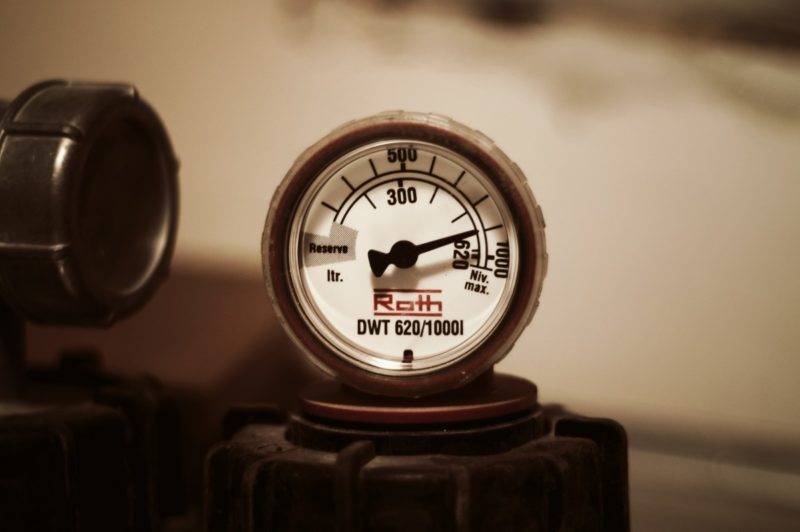Are you wondering how to replace expansion tank on water heater? Don’t worry, and you have arrived at the right place. The tee-fitting inserted inside the cooling water line is placed in an expansion reservoir right well above the hot water system.
This expansion reservoir is typically erected vertically. However, it is permissible to position it horizontally if lack of space is a factor.
The piping connections you’ll require may vary depending on the sort of water pipes you possess and how the expansion container is orientated, but copper pipe fittings are by far the most typical. The expansion tank features a 1/4-inch and 2/4-inch thread connection, which is screwed or perspired into chilled water pipe through a tee connection and small sections of thread and sweat-soldered pipelines. This is just and preview, and you need to keep reading to learn the step-by-step procedures to replace the expansion tank on the water heater.
Steps To Replace Expansion Tank On Water Heater
Users can save a lot of money by replacing the hot water system expansion tank. Anyone can replace the tank on a water heater without hiring an experienced plumber if you have the necessary equipment and follow this advice. Read the below-mentioned steps learn how to replace expansion tank on water heater.
Step #1. Examine your existing expansion tank
Locating the expansion tank is the very first stage towards upgrading it. This tank is usually linked to the water heater and is positioned immediately beside it. When you’ve found it, make a note of the measurements and interconnections so you can be sure a new one will fit & operate correctly when you get it. A replacement water heater expansion container may be purchased at a hardware store or online.
Step #2. Disconnect the supply lines
Close this shut-down faucet to shut off the water supply to the heater. The shutdown valve could be close to a heater or higher up the pipeline. When you don’t locate it over there, users can disconnect off the building’s principal supply of water. By switching the appropriate breaker or turning off the significant electricity to the home, cut off the electricity supply to the hot water system. Allow the water heater to rest for a while. This might take over an hour.
Step #3. Remove the water
To achieve a lower pressure, remove the water from the heater. Its flapper valve could be opened to remove water. Catch the water using the container. Because the water might well be pressured, proceed cautiously. Quickly detach the expansion reservoir, taking good care not to harm the pipes or connections.
Step #4. Fill the expansion tank with air
Check that the level of pressure in the container is zero with the supply of water switched off. Connect a cycle tire compressor to the Safety valves, which may be found at the tank’s base. Fill it up with air to either pressure of 13 psi or even as directed by the maker. Using a pressure gauge, verify its force in the tank.
Step #5. Place a new tank
Wrap Adhesive wrap across the connections’ ends. Keep the first 2 or 3 knots raw and cover the Adhesive first from the start of the junction; otherwise, the adhesive would get into the mechanism. Replace the existing tank in the same spot. Attach the heater system to the new reservoir with caution. Check to see that the connections are properly secured.
Step #6. Turn on the water heater and examine
Now is the time to switch on the supply of water. Inspect all of the connections for leaks. Then, turn on a valve and let the water flow via the hot water system. Look for any leaks once more. Switch on the water heater’s power source, then switch it on and wait for this to warm up. Do the last assessment after the equipment fully warmed up. Test whether the water pouring from the friendly water tap is warm.
What Is An Expansion Tank?
The hot water system expansion reservoir is designed to protect pipelines and faucets in piping systems with a rear prevention method or pneumatic control. When redeveloping a water heater, the local construction code might demand the placement of an expansion tank, and it may be a retrofitting job to safeguard an old water heater.
What Is The Best Way To Tell If The Expansion Tank Is Functioning?
Assume the expansion tank has a filter that separates the moisture from the atmosphere is connected to the chilled water connection at the end of the line. Gently press the expansion tank’s top and bottom sections. This tank is in fine shape if something feels empty. On the other hand, the thud indicates that water has reached the upper chamber due to a faulty diaphragm.
Take the temperature of a tank by touching the top and bottom parts. The lower section should be hot because it holds hot water from the tank. Because it keeps cooler air, you will feel chilly in the top area. It’s best to also know how to clean your baseboard heater.
It’s A Wrap!
We are delighted to know that you have learned how to replace expansion tank on water heater. The steps mentioned above help you return the expansion tank; before replacing the expansion tank, take all the safety measurements to avoid any evil thing. Don’t hesitate to know these things too; read about how to clean a wall heater and where to place a space heater. Thank you, friends, for staying with us.

